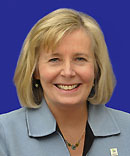Rail~Volution sets the stage
November 2012
Building strong communities by efficiently integrating land use and transportation investments is important to all regions and communities across the country. The opportunity to learn more about best practices for accomplishing integration is why a considerable delegation of officials, staff and advocates from around our region recently attended the 2012 Rail~Volution conference in Los Angeles, California.

The conference included citizen activists, government officials, developers, business leaders, planners, and many others from more than 300 communities nationwide.
As the Council continues to work toward integration of our primary functions, the lessons gleaned from the conference will help us set the stage for our next steps. Our most visible efforts to integrate our work to date have occurred through programs like the Livable Communities Act Transit-Oriented Development grant account and the Corridors of Opportunity project.
We’re also entering into important partnerships and ongoing conversations with local Chambers, Greater MSP, builders and developers, nonprofits, and many others to promote public, private and nonprofit investment in livable communities and multi-modal transportation. These are important steps, and we hope to make more progress with the information we learned at this year’s Rail~Volution conference.
The potential of this conference to expand our collective knowledge and connect us with tools for success is why I’m proud that in 2014, the Twin Cities region will host this nonpartisan, mode-agnostic and all-around inspiring event. It is a tremendous opportunity to showcase the work happening here, from the reconstruction and development of University Avenue to the region’s first bus rapid transit line along Cedar Avenue to efforts by individual cities to expand bicycle lanes and connect transit modes.
The insights and advice local participants picked up at this year’s conference encourage each one of us to continue the important work of building stronger communities and an economically competitive region.
I am convinced that if we all continue to promote and deliver transit-oriented development and strong, integrated transit systems, in 30 years our successors will look back on our efforts and accomplishments and say “job well done.”
Susan Haigh
November 2012